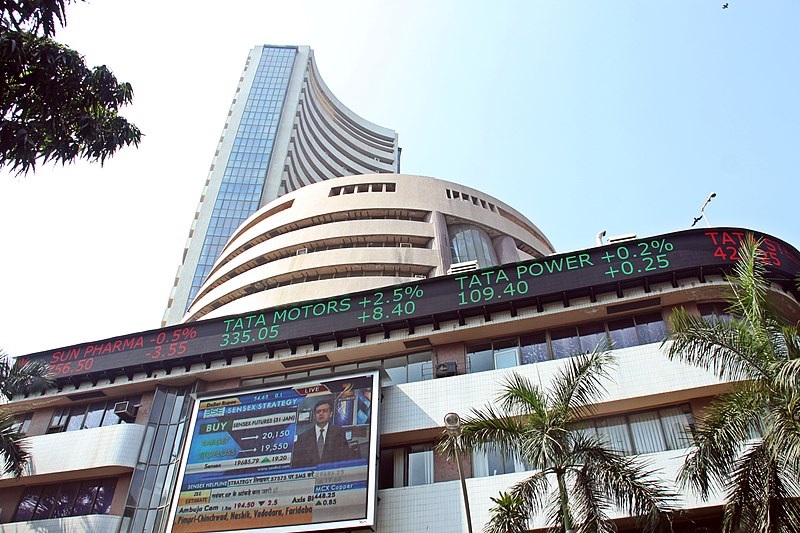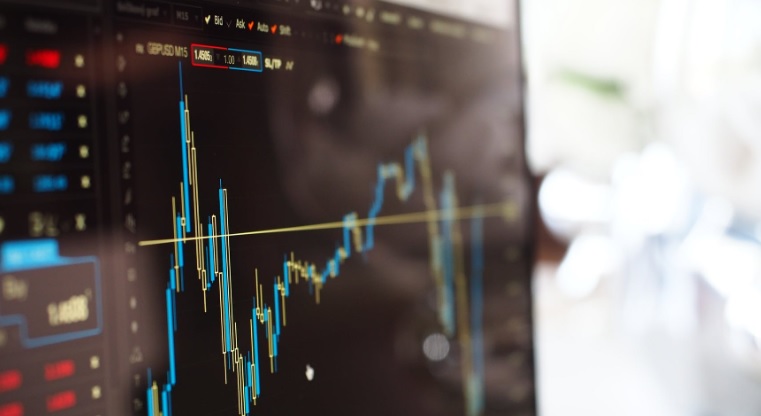If you’re interested in the Indian stock market, then it’s highly likely that you are well-acquainted with the word “Sensex”. But still, there are many people in our country who are not well aware about the different aspects of this word. So in this article we will try to provide in-depth knowledge about the oldest (and probably the most important) Index of our country i.e. the BSE Sensex. Let’s get started!

Sensex, also popularly known as the S&P BSE Sensex index is the primary and most important benchmark index of the Bombay Stock Exchange (BSE). It is the reflection of Indian Economy, as it is a compilation of 30 largest, well-established, financially solid, and most actively traded stocks/companies on the BSE. These companies represent different industrial sectors of India, thus the economic analysts and stock market investors make very good use of the Sensex to analyze the overall growth pattern, development of the internal industries, and the ups and downs of the Indian economy.
Ace stock market investor and analyst Deepak Mohoni first coined this term Sensex. It is nothing but a linguistic blend of the words Sensitive and Index. There is a dedicated committee (S&P BSE Index Committee) which reviews the composition of the Sensex in June and December every year. The committee can change the constituents and its weightage on the Sensex if need be.
A company can only be included in the Sensex if it matches five criteria as set by the aforementioned committee. Those five criterias are mentioned below:
- The stock/company must be listed and traded on the Bombay Stock Exchange (BSE).
- It must a large cap blue chip company.
- The stock/company has to be relative liquid so that it can be traded in any volume whatsoever.
- The company must be generating revenues from its core activities.
- The company must keep the core sector balanced broadly in line with the Indian equity market.
The Sensex was published on 1st January, 1986, but its base value was taken as 100 on 1st April 1979 (base year 1978-79). BSE Sensex has been growing exponentially since 1991 when the Indian government opened up our domestic economy for foreign investments. However, most of its growth has come into effect in the 21st Century only.
As I mentioned before Sensex was launched in 1986, back then its calculation was based on age old market capitalization weighted methodology. But later the BSE reviewed and modified this methodology to be sure that the Index reflects present market scenarios. Currently the Sensex is calculated on the basis of free float market capitalization methodology, this mechanism was introduced in September 2003.
In this method we only consider company’s free float shares which can be readily available for trading in the open market instead of company’s total outstanding shares. In layman’s term Free Float Market Capitalization is a company’s total capital minus director’s stakes.
If you wanna know more about this Free Float Methodology, then you can read more about it from here.
In the last four decades BSE Sensex has given a CAGR return of almost 17% which is greater than any asset classes whatsoever. In between that the index has witnessed many ups and downs, but it has managed to remain the barometer of Indian Economy in these long 40 years.
@SENSEX_BSE base date is April 1,1979. On that day, it was set at100. Today it completed 40 years and coincidentally reached 39,000. If we take dividends in to account, on total return basis, it would be close to 56,000. Congratulations India for the stupendous growth! @BSEIndia
— Ashish Chauhan BSE (@ashishchauhan) April 1, 2019
Sensex has always been reflecting the growth and changing dynamics of Indian economy over the years. For example in the initial years sectors like industrial, materials and consumer discretionary like engineering, cement, fertilizers and consumer electronics largely dominated the composition of Sensex, but later services sector such as financial services, telecommunications, Information Technology, Healthcare and others came into the picture.
Here I present the entire timeline of S&P BSE Sensex over the years:
Start of the Journey
On January 1986 S&P BSE Sensex was launched publicly as the country’s first equity based index. But the base value of the Sensex was taken as 100 on 1 April 1979 (base year 1978-79).
From 100 to 1000 Mark: The First Major Milestone
Sensex touched the 1000 mark for the first time on 25 July 1990, that means it took as much as 11 years to cross the four digit mark. This milestone was possible due to an excellent corporate quarterly results and a very good monsoon. Since inception to this year Sensex grew at an astonishing CAGR of 23.28%.
From 1000 to 5000 Mark: Liberal Economic Policy, Harshad Mehta Scam and More
It took nearly a decade for the Sensex to cross the next major hurdle of 5000 points. In fact the start was great, as in 1991 India opened its domestic economy for foreign investments and also started adopting a liberal economic policy, due to which Sensex rallied to 4000 points by March 1992. But then the Harshad Mehta scam happened and the index crashed more than 50% due to the unfolding of this major stock market scam. However, by the end of 1999 Sensex regained its momentum and crossed the 5000 mark barrier as the Bharatiya Janata Party (BJP) led coalition won the majority in the 13th Lok Sabha Election and formed a stable government.
From 5000 to 10000: Slow but Steady Growth
It only took 6 years for the Sensex to double and cross 10000 mark by 2006. In fact this five figure milestone also represented a 100x growth for this index in a span of 27 years, which implies CAGR return of 18.60%.
From 10000 to 20000: Growth Like Never Before
The BSE Sensex took a long 27 years to reach first 10000 points, but then to double the numbers it only took 18 months. On October 29, 2007, Sensex crossed 20000 mark for the first time and made a new record of stellar growth. Factors like aggressive FII buying, participation of retail investors and others triggered this astonishing rate of growth in this period.
From 20000 to 30000: Global Recession, Economic Revival, Large Scale Scams, Stable Government and More
Till 2007 this index showed a stellar growth rate, but in 2008 on the back of global recession we saw a major fall. In fact it retraced nearly 60% from the high 20000 to 7700 levels by October 2008. In this period Sensex wiped out gains made by investors over the last many years. But, like before, Sensex managed to find its momentum again by 2014 on the back of strong Narendra Modi led BJP government. In 2014 Sensex rallied to cross 25000 mark with ease, and within 2015 it crossed 30000 mark as well.
From 30000 to 40000 and Beyond
On May 2019, Sensex crossed the historic high of 40000, as Narendra Modi led BJP government stormed into the power for the second time. But then the finance minister Nirmala Sitharaman announced few policies like extra tax for the super riches, tweak in minimum promoter shareholding in publicly listed companies in Budget 2019, which caused a correction in the Sensex. But the finance ministry understand its mistake and fixed all those policies soon enough to maintain the growth momentum. She also announced some great reforms like Corporate Tax Cut, booster dose for auto and real estate sector and many more. In October 2019, Sensex regained its 40000 mark, and by November 2019 it also crossed 41000 mark.
In this section we will try to dissect all the components of Sensex 30. Here you will be able to understand the Sensex mechanism in a much better way. There are a total of 30 companies in this index, but that doesn’t mean every company has equal weightage to the index. In fact the top 6 companies have more than 50% weightage in the BSE Sensex index, and this weightage is calculated on the basis of free float market capitalization.
You can check this below table for better understanding:
As of now the financial sector like banks and NBFCs is dominating the S&P BSE Sensex with more than 46% weightage. After that Information Technology (14%) and Oil and Gas (13%) is contributing to this index most.
Here is a table explaining the sector wise weightage of the BSE Sensex in a better way.
Some interesting Facts about the BSE Sensex 30 Index
Financial Sector (Banks and NBFCs) contributes 46.51% to the weightage. Top 5 Stocks (on the basis of free float market cap) i.e. HDFC Bank, Reliance, HDFC, Infosys and ICICI Bank contribute 47.71% weightage. Sun Pharma is the only Pharma company in the Sensex. ITC which is the largest Cigarette making brand still have a dominant weightage ~6% in the Sensex 30 index. Sensex does not broadly showcases India’s developing story as sectors like Capital good and Construction (Engineering) don’t contribute much to the index. State Bank of India is the only Public Sector Bank in Sensex. Bharti Airtel is the only telecom company in the index.
In spite of witnessing so much ups and downs Sensex has grown with a CAGR of almost 17% since its inception, which is simply phenomenal. It has given much better returns than traditional investable assets like Gold, Fixed Deposits, Real Estate and others. You can check the performance of Sensex in different time period below.
Sensex and Nifty are two most tracked indices of the Indian stock market, and both of these indices reflects the movement of the domestic stock market. So in broad terms both of these are basically serve the same purpose, but fundamentally they are quite different from each other. Here we will be comparing Sensex and Nifty in the most basic way possible.
Yes, the answer is yes. One can invest in Sensex if he/she wants to bet the growing Indian economy. In fact if you had invested 1 lakh in Sensex 40 years ago, that would have become 4 Crore as of now.
There are mainly two ways to invest in Sensex, via ETF (Exchange Traded Funds) or via Index Funds (offered by Mutual Fund agencies). In order to purchase ETFs you need to have a demat account, but for Index funds that is not mandatory.
Wrap Up
I am hoping that by now you have acquired enough knowledge about Sensex and its impact on our domestic economy. My sole aim with this blog is to make every one of you understand the stock market in the best way possible. If you have any comments then make good use of the comments box below. Let’s discuss and empower each other!
